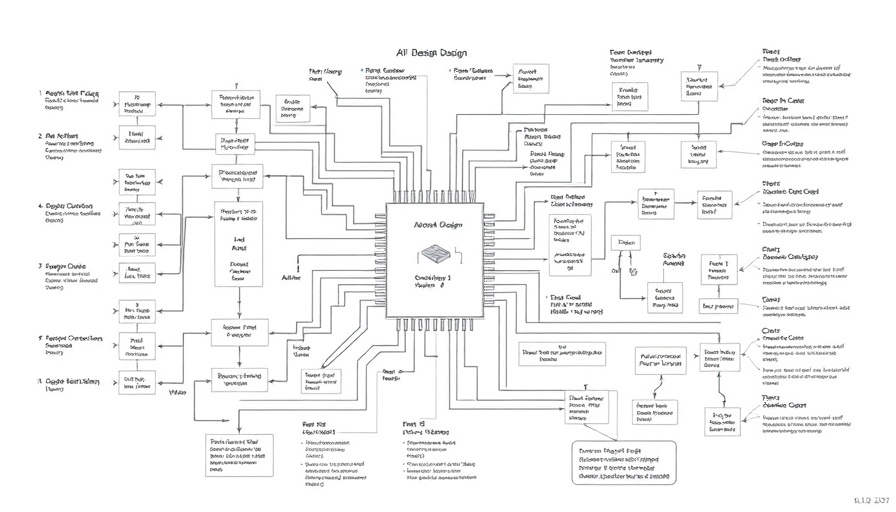
China Takes On Chip Design With AI Innovations
A pioneering leap in technology was marked this June when researchers at the Chinese Academy of Sciences unveiled the world's first AI-based processor chip design system named QiMeng. This initiative, driven by growing pressures in the global tech landscape, reflects China's ambitions to enhance its chip-making capabilities.
The Role of AI in Chip Design
The traditional process of chip design involves extensive manpower, drawing from teams of highly skilled engineers who can transform abstract ideas into complex physical products. This labor-intensive method has been criticized for being slow and costly. QiMeng, however, integrates artificial intelligence tools to revolutionize this process. By utilizing a large language model (LLM), the system can interpret user requests related to chip performance and convert them into actionable architectural plans, significantly slashing design times.
Three Key Components of QiMeng
QiMeng consists of three main parts, each working in harmony to deliver optimized chip designs. The first is a domain-specific chip model, designed to cater to the unique specifications of users. The second is the design agent, which conducts the majority of work in crafting the chip architecture. Finally, the application suite provides necessary tools and features to facilitate the design agent's processes. This interconnected arrangement ensures the process is streamlined and effective.
Learning Through Experience
Much like how humans improve through exposure and experience, QiMeng learns chip design by analyzing a vast database of existing chip technologies. In tests, it successfully created designs comparable to the performance levels of older chips like Intel's 486 and ARM's Cortex-A53. Despite these designs being somewhat dated, the researchers are enthusiastic about the system's potential to advance further, gradually matching the cutting-edge designs emerging from Western tech firms.
Implications for the Global Tech Landscape
This breakthrough comes at a time when geopolitical tensions have made collaborations between nations increasingly complex. As Western countries limit the sharing of advanced technology, China’s independent efforts to bolster its chip production signify a vital shift in the global tech ecosystem. The ability of QiMeng to create specialized chips at a reduced cost could challenge the status quo, prompting other nations to reconsider their strategies in chip manufacturing.
Looking Ahead: What’s Next for AI in Chip Design?
As QiMeng evolves, it could herald significant changes across various technology sectors, from consumer electronics to artificial intelligence applications. The potential for rapid prototyping and cost-effective chip production could empower startups and smaller firms, fostering innovation on a broader scale.
Understanding the impacts of such advancements is crucial for industry stakeholders, governments, and consumers. This technology not only stands to enhance performance across devices but also raises questions regarding market monopolies, ethical implications, and future international collaborations in tech development.
As we look towards the future, witnessing how the dynamics between technology creation and geopolitical realities unfold will be fascinating. Will QiMeng pave the way for a new era in chip manufacturing, or will it encounter challenges that test its innovative design framework? Only time will tell.
 Add Row
Add Row  Add
Add 




Write A Comment